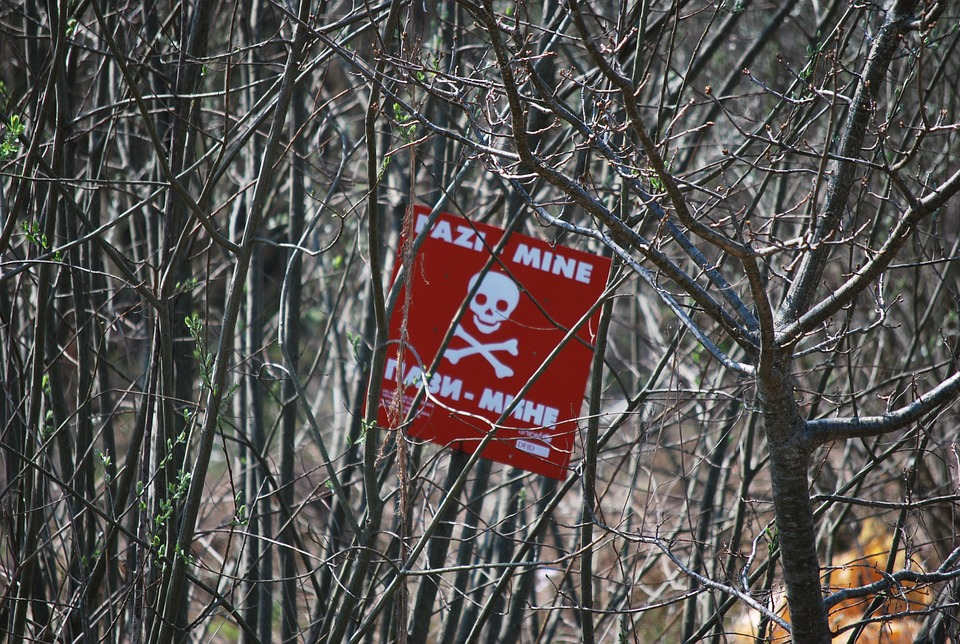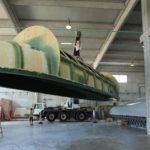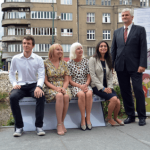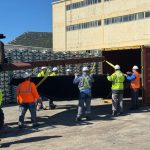As Poslovni Dnevnik/Darko Bicak writes, although Croatia is fortunately no longer at the top of the global list of countries with the biggest problems with landmines and unexploded ordnance from previous conflicts, the country is one of the leaders in demining technology, which could be further developed in the coming period.
After Dok-ing developed complex robotic demining systems recently, primarily due to national needs and then increasing demand across the global market, the Faculty of Electrical Engineering and Computing (FER) in Zagreb is nearing the completion of an intelligent demining technology project of all other metals found throughout the country.
From Syria to Colombia…
The team of FER researchers led by prof. Dr. Vedran Bilas from the Department of Electronic Systems and Information Processing, which includes young scientists Marko Simic and Davorin Ambrus, developed a system for recognising and distinguishing metal objects hidden in the ground, found by a metal detector, based on their shape.
Confirmation of their success is their participation in this year’s eighth Mine Action Technology Workshop organided by the Geneva International Centre for Humanitarian Demining (GICHD) in Switzerland.
Professor Bilas explained that there was significant interest in their project, mostly from countries where mines are still a major security and social problem, such as Syria, Iraq, Jordan, Yemen, Cambodia and Colombia, but also humanitarian and other specialised international institutions.
“Significant contacts have been made and we expect that concrete contracts will be reached in the next few months. I’m afraid that, unfortunately, here in Croatia, there is no interest of the economy in the implementation of our technology and it will certainly need to be produced elsewhere. According to our current plans, we’ll open a development company with FER that will continue to develop this technology, and the production itself will be in some other country. This is a pity because demining technology is being developed in only a few countries now,” the team of FER researchers stated.
Bilas added that their detector, which is a combination of electro-magnetic and digital skills and artificial intelligence, is nearing completion and its commercial application can be expected within a year. Mine detectors, ie metal detectors, have been known since the Second World War and since then this technology has been perfected mainly to move towards increasingly sensitive devices, ie those that can detect much smaller metal objects.
“This is where the problems arise because there’s a lot of metal left behind in places where there has been war, in urban areas and elsewhere. Another serious problem is that the soil is not magnetically neutral. Some soils are magnetically very active, such as red soil, and then you find yourself in a situation where you can’t make full use of such a sensitive instrument because on the one hand it bothers you that the soil produces a certain reaction, and on the other hand you discover new objects which are generally difficult to distinguish,” explained Bilas.
That is why, four years ago at FER, they started their own project of improving technology in the field of humanitarian demining, for which they received financial support from the Foundation “Find a better way” of the legend of British football Sir Bobby Charlton. Bilas explained that the recognition of an object by the device developed by FER researchers is based on a signal from the metal detector, and it is then necessary to know the position of the “head” of the detector in real time, while the deminer searches the ground.
“Several research groups are working on the problem of determining the position, but they haven’t come to a good and acceptable solution as yet. As part of this project, we developed and tested a positioning system in which we monitor the movement of the head with magnetic field sensors. It all works really well in the lab and in real conditions. We were able to move forward with that, so, using data on the position in space and the signals of the detectors, we performed the recognition of categories of objects with the algorithms of artificial intelligence,” noted Professor Bilas.
He concluded that although he regrets that there is no great interest of the economy and institutions in Croatia in the field of mines and related technologies, on the other hand he is glad because he shows that after decades this security problem that burdened the Croatian state and society is mostly solved.
For more, check out Made in Croatia.












